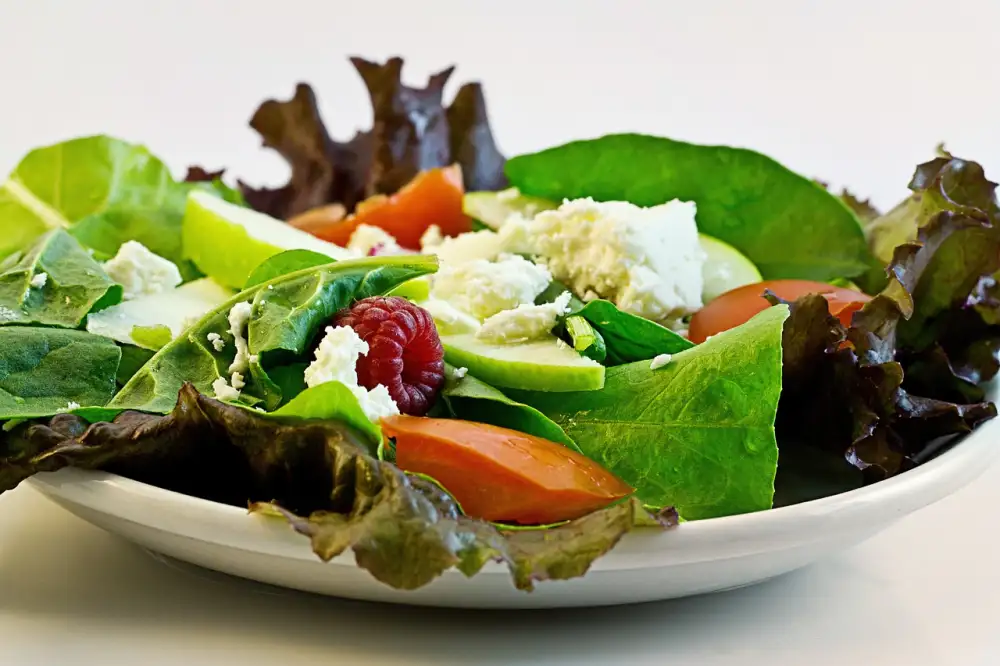Trim Down with Tasty and Nutritious Weight Loss Meals: Discover the Art of Healthy Eating

- Understanding the Importance of a Healthy Diet for Weight Loss
- Key Principles of Weight Loss Meals
- Incorporating Lean Protein into Your Weight Loss Meals
- The Role of Fiber in Weight Loss Meals
- Choosing Nutrient-Dense Foods for Weight Loss Meals
- Healthy Cooking Techniques for Weight Loss Meals
- Planning and Preparing Your Weight Loss Meals
- Delicious and Satisfying Weight Loss Meal Ideas
- Tips for Success with Weight Loss Meals
When it comes to losing weight, the food we eat plays a crucial role. Weight loss meals are specifically designed to help individuals shed those extra pounds while still providing essential nutrients and satisfying flavors. These meals are carefully crafted to promote a healthy lifestyle and support sustainable weight loss. By incorporating the right ingredients and cooking techniques, weight loss meals can be both delicious and nutritious. In this article, we will explore the art of healthy eating and discover how you can trim down with tasty and nutritious weight loss meals.
Understanding the Importance of a Healthy Diet for Weight Loss
When it comes to weight loss, a healthy diet is crucial. Many people mistakenly believe that they can shed pounds by simply cutting calories or following fad diets. However, these approaches often lead to short-term results and can be detrimental to overall health.
A healthy diet for weight loss focuses on nourishing the body with nutrient-dense foods while creating a calorie deficit. This means consuming fewer calories than you burn through physical activity and daily functions. By doing so, your body will tap into its fat stores for energy, leading to gradual and sustainable weight loss.
In addition to helping you lose weight, a healthy diet provides numerous benefits. It boosts your energy levels, improves digestion, enhances mental clarity, and supports overall well-being. It also reduces the risk of chronic diseases such as heart disease, diabetes, and certain types of cancer.
It's important to note that a healthy diet is not about deprivation or strict rules. Instead, it's about making smart choices and finding a balance that works for you. It involves eating a variety of whole foods such as fruits, vegetables, lean proteins, whole grains, and healthy fats.
By understanding the importance of a healthy diet for weight loss, you can make informed decisions about what you eat and create lasting changes in your lifestyle. Remember that weight loss is not just about reaching a number on the scale; it's about improving your overall health and well-being.
Key Principles of Weight Loss Meals
1. Portion Control: One of the key principles of weight loss meals is controlling portion sizes. By eating smaller portions, you can reduce your calorie intake and promote weight loss.
2. Balanced Nutrition: Weight loss meals should provide a balance of macronutrients - carbohydrates, proteins, and fats - as well as essential vitamins and minerals. This ensures that your body gets all the nutrients it needs while promoting weight loss.
3. Low-Calorie Density: Choosing foods with low-calorie density, such as fruits and vegetables, allows you to eat larger portions without consuming excessive calories. These foods are also rich in fiber, which aids digestion and helps you feel full for longer.
4. Reduced Sugar Intake: Limiting your consumption of added sugars is crucial for weight loss. Sugary drinks and desserts can quickly add up in calories without providing much nutritional value.
5. Hydration: Staying hydrated is important for overall health and weight loss. Drinking water before meals can help control appetite and prevent overeating.
By following these key principles, you can create weight loss meals that are not only nutritious but also satisfying, helping you achieve your goals while enjoying delicious food.
Incorporating Lean Protein into Your Weight Loss Meals
Incorporating lean protein into your weight loss meals is essential for several reasons. Firstly, protein helps to keep you feeling full and satisfied, reducing the likelihood of overeating or snacking on unhealthy foods. Secondly, protein plays a crucial role in building and repairing muscles, which can be especially important when you're trying to lose weight.
There are plenty of options for incorporating lean protein into your meals. Skinless chicken breast, turkey, fish, tofu, and legumes like lentils and beans are all excellent sources of lean protein. You can add these ingredients to salads, stir-fries, soups, or simply enjoy them grilled or baked.
It's important to note that portion control is key when it comes to incorporating protein into your weight loss meals. Aim for around 3-4 ounces of lean protein per meal, which is roughly the size of a deck of cards.
By including lean protein in your weight loss meals, you'll not only enhance the taste and texture but also provide your body with the necessary nutrients to support your weight loss journey.
The Role of Fiber in Weight Loss Meals
Fiber plays a crucial role in weight loss meals. It promotes satiety, keeping you feeling full and satisfied for longer periods. Additionally, fiber helps regulate blood sugar levels and aids in digestion. By including high-fiber foods like fruits, vegetables, whole grains, and legumes in your meals, you can enhance weight loss efforts. These foods are not only low in calories but also provide essential nutrients and vitamins. So, make sure to incorporate fiber-rich ingredients into your weight loss meals for optimal results.
Choosing Nutrient-Dense Foods for Weight Loss Meals
When it comes to weight loss meals, choosing nutrient-dense foods is essential. These are foods that provide a high amount of nutrients relative to their calorie content. By incorporating nutrient-dense foods into your meals, you can ensure that you're getting the most bang for your buck in terms of nutrition.
Some examples of nutrient-dense foods include fruits and vegetables, lean proteins like chicken and fish, whole grains, and legumes. These foods are rich in vitamins, minerals, and antioxidants that support overall health and help keep you feeling satisfied.
To maximize the nutrient density of your meals, focus on including a variety of colorful fruits and vegetables. These vibrant produce options are packed with vitamins, minerals, and fiber. Additionally, opt for lean proteins like skinless chicken breast or tofu to provide essential amino acids without excess fat.
Whole grains such as quinoa or brown rice are also great choices as they offer more fiber and nutrients compared to refined grains. And don't forget about legumes like lentils or beans – they're not only high in protein but also contain plenty of fiber to promote feelings of fullness.
By prioritizing nutrient-dense foods in your weight loss meals, you can ensure that you're nourishing your body while still achieving your weight loss goals.
Healthy Cooking Techniques for Weight Loss Meals
When it comes to cooking weight loss meals, it's important to choose healthy cooking techniques that maximize flavor without adding unnecessary calories. Here are some tips to help you cook delicious and nutritious meals:
1. Use non-stick cookware or cooking spray instead of oil or butter to reduce added fats.
2. Opt for baking, grilling, steaming, or broiling instead of frying to minimize the use of oil.
3. Flavor your dishes with herbs, spices, and citrus juices instead of salt or high-calorie sauces.
4. Roast vegetables in the oven with a drizzle of olive oil for a tasty and low-calorie side dish.
5. Choose lean cuts of meat and trim off any visible fat before cooking.
6. Try marinating meats in low-fat yogurt or vinegar-based dressings to tenderize them without adding excessive calories.
7. Steam fish with herbs and lemon slices for a light and flavorful main course.
By using these healthy cooking techniques, you can create weight loss meals that are not only good for your waistline but also bursting with flavor.
Planning and Preparing Your Weight Loss Meals
Planning and preparing your weight loss meals is crucial for success. Start by creating a weekly meal plan that includes a variety of nutritious foods. This will help you stay on track and avoid unhealthy choices. Make a shopping list based on your meal plan and stick to it when grocery shopping. Prepping ingredients in advance can save time during the week. Cook large batches of healthy recipes and portion them out for easy grab-and-go meals. By planning ahead, you'll be more likely to make healthy choices and reach your weight loss goals.
Delicious and Satisfying Weight Loss Meal Ideas
1. Grilled chicken breast with roasted vegetables: Season a lean chicken breast with herbs and spices, then grill it to perfection. Serve it alongside a colorful mix of roasted vegetables like bell peppers, zucchini, and carrots for a satisfying and nutrient-packed meal.
2. Quinoa salad with mixed greens: Cook quinoa according to package instructions and let it cool. Toss it with a variety of mixed greens, cherry tomatoes, cucumbers, and your choice of protein such as grilled shrimp or tofu. Drizzle with a light vinaigrette for added flavor.
3. Stir-fried tofu and vegetables: Sauté tofu cubes in a non-stick pan until golden brown. Add in an assortment of colorful vegetables like broccoli, bell peppers, and snap peas. Season with low-sodium soy sauce or teriyaki sauce for a tasty stir-fry that is both filling and nutritious.
4. Salmon with steamed asparagus: Bake a fresh salmon fillet seasoned with lemon juice, dill, and garlic until flaky. Serve it alongside steamed asparagus spears for a simple yet satisfying meal packed with omega-3 fatty acids and vitamins.
5. Turkey lettuce wraps: Cook ground turkey in a skillet with onions, garlic, and your favorite spices. Spoon the cooked turkey onto large lettuce leaves such as romaine or iceberg lettuce. Top with diced tomatoes, avocado slices, and a drizzle of low-fat Greek yogurt for added creaminess.
These delicious weight loss meal ideas are not only flavorful but also packed with nutrients to keep you satisfied while helping you achieve your weight loss goals
Tips for Success with Weight Loss Meals
1. Portion Control: Be mindful of your portion sizes to avoid overeating. Use smaller plates and bowls to help control your portions.
2. Meal Planning: Plan your meals in advance to ensure you have nutritious options readily available. This will help you avoid unhealthy food choices when you're hungry.
3. Stay Hydrated: Drink plenty of water throughout the day to stay hydrated and promote a feeling of fullness. This can help prevent overeating during meals.
4. Mindful Eating: Slow down and savor each bite, paying attention to the flavors and textures of your food. This can help you feel more satisfied and prevent mindless eating.
5. Include Variety: Incorporate a wide range of fruits, vegetables, whole grains, lean proteins, and healthy fats into your meals to ensure you're getting a balanced diet.
6. Regular Exercise: Combine your weight loss meals with regular physical activity for optimal results. Aim for at least 150 minutes of moderate-intensity exercise per week.
7. Seek Support: Surround yourself with a supportive network of friends or family members who share similar health goals. They can provide encouragement and accountability on your weight loss journey.
8. Practice Self-Care: Take time for self-care activities such as meditation, yoga, or relaxation exercises to manage stress levels that may contribute to emotional eating.
By following these tips, you can enhance the effectiveness of your weight loss meals and achieve long-term success in reaching your health goals.
Incorporating weight loss meals into your daily routine is not just about shedding pounds; it's about embracing a healthier lifestyle. By understanding the importance of a healthy diet, incorporating lean protein and fiber, and choosing nutrient-dense foods, you can fuel your body with the right nutrients while still enjoying delicious meals.
By using healthy cooking techniques and planning ahead, you can ensure that your weight loss meals are both nutritious and satisfying. Remember to focus on portion control and listen to your body's hunger cues. And don't forget to stay hydrated!
With the right mindset and dedication, weight loss meals can be an enjoyable part of your journey towards a healthier you. So why wait? Start exploring the art of healthy eating today and discover how delicious and fulfilling weight loss meals can truly be.
Published: 13. 12. 2023
Category: Health



